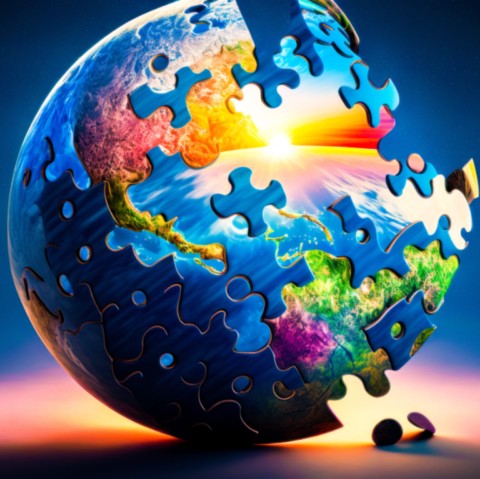All connected: a reflection for the Earth Day
To keep the children entertained, the parents gave them a puzzle of a world map. When the parents returned not long after leaving the kids, they found the puzzle finished. Impressed, they asked how it was solved so quickly. The children explained that the puzzle had two sides: a map of the planet at one side and a human figure at the other. "We discovered that putting the pieces of the human being together, we put the earth together".
The tale is an interesting depiction of how to connect Earth Day and the human relation with the environment. Earth Day, which began in 1970, spread worldwide awareness for urgent action regarding ecological challenges. The intention of this day is that people from everywhere around the globe come jointly to recognize the complex web of life that supports us and work to improve the human relation to our planet.
Pope Francis reaffirmed this idea in his encyclical "Laudato Si" in 2015, highlighting the pressing need for integrated human growth and ecological conversion. In order to fight the degradation of the environment, the declaration emphasized the moral need of taking care of our common home and advocated for discussion between religion, science, and society.
Much progress has been made in environmental awareness, legislation, and action since the first Earth Day. Legislation such as the Clean Water Act and the Clean Air Act, originated from the environmental movement, has helped some on the quality of the air and water. By safeguarding endangered species and important habitats, conservation initiatives have preserved biodiversity for coming generations.
With the development of renewable energy technology, fossil fuels can now be replaced with sustainable options that also lessen the effects of climate change. Waste management and recycling innovations have lowered pollution levels and boosted circular economies. Furthermore, community-led and grassroots programs have given people the power to improve their immediate environment.
But the obstacles we must overcome are still great. Exploitation of various ecosystems, the careless use of natural resources as a result of excessive consumption, unethical manufacturing processes, unsustainable agricultural practices, inappropriate over-urbanization, and the preference for individualism over the common good, are realities that human beings have the power and obligation to change in a personal and collective scale. Globally, vulnerable communities and biomes continue to be disproportionately affected by environmental justice challenges and are still at risk from climate change.
By embracing the principles of sustainability, stewardship, and solidarity, we can work towards a more harmonious relationship with nature, ensuring a future for generations to come. Just as the children in the tale realized the inter-connectedness of the world and the human person, so we must recognize our inter-connectedness with the Earth and strive to nurture and protect it.
Each one of us can do the difference!


